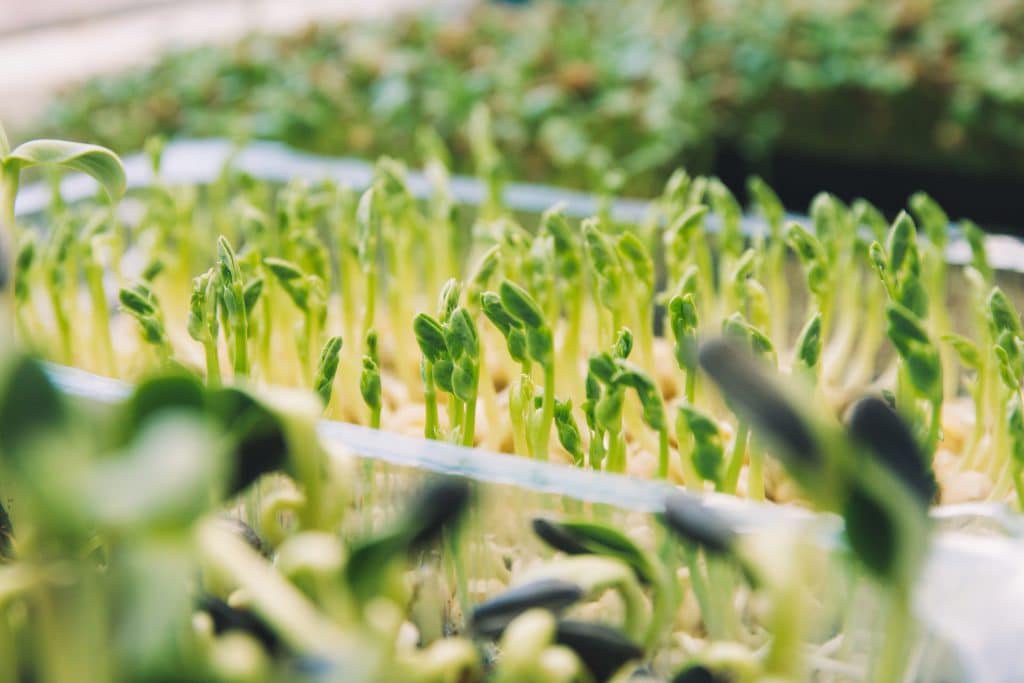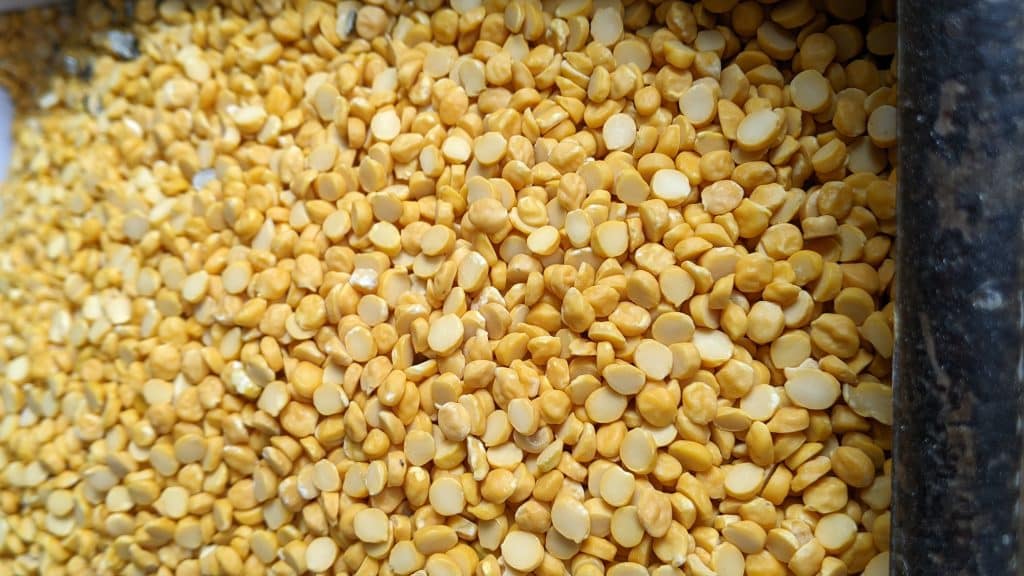Don’t let consumer misbeliefs hamper sales – alleviate concerns and drive pea protein sales
If you’d have asked someone what they thought about eating ‘pea protein’ 10 or 15 years ago, unless they were in the food business themselves, they’d likely have met your question with a baffled face. ‘Peas are just a vegetable to have on the side of your meal, right?’
Wrong. Most consumers now know that the small but mighty legume is packed with protein, along with other nutrients. Because of this, pea protein is skyrocketing to the top of the plant-based protein ingredients sector.
Pea-protein ingredients come from yellow peas, most often grown in North America or Europe. Pea protein is created by separating the protein from pea starch and fiber. Processors can output four types of protein in this way: pea-protein isolate, textured pea protein, pea-protein concentrates, and hydrolysed pea protein.
All are used throughout the food industry, though pea-protein isolate (which has a high protein content of 77 to 81%1) is primarily used in protein powders while textured pea-protein, with a lower protein content, is mainly used in meat alternatives.

The yellow, pea-protein ingredients market has experienced significant growth in recent years, amassing a global value of US$2 billion in 2023. Excitingly, between 2023 and 2033, the market is expected to expand with a compound annual growth rate (CAGR) of 6%, increasing to a global value of US$3.6 billion by 2033. 2
Demand for pea-protein products is rapidly rising in the food industry, owing to pea protein’s nutritional benefits, ‘Big-Eight allergen-free’ status (free from the top eight allergens, including milk, eggs, fish, shellfish, tree nuts, peanuts, wheat, and soybeans), functional properties, sustainability advantages, and increasing availability.
According to Innova Market Insights, pea protein now drives growth in established plant-based protein ingredients, overtaking the previous leader, soy. Between October 2021 and September 2022, 31.6% of new meat-substitute product launches tracked globally contained pea protein. Through the period, pea protein experienced a high CAGR of +60.8%.3
While pea-protein ingredients are experiencing huge success, consumer uncertainty persists. Let’s find out why not all consumers are jumping to purchase pea-protein products and how to boost sales by mitigating concerns.
What are consumer perceptions of pea protein?
1. ‘Causes bloating and an upset stomach’
A common consumer misconception is that the consumption of pea-protein food products will ‘cause bloating’ and an ‘upset stomach’. This perception has arisen because eating a lot of high-fibre plant-foods, like legumes, can lead to gas and belly aches in some people.
However, most of the fiber contained in peas is removed to create pea-protein ingredients, which means digestive issues are generally not an issue.
In fact, research shows that pea protein is a highly digestible protein source – proving comparable to whey or casein in digestibility studies4 (though digestibility changes depending on the production process and nature of the pea protein type)5.
Make sure to highlight the great digestibility of pea protein on your product packaging and throughout marketing and advertising campaigns.
2. ‘I’ll get an allergic reaction!’

One accusation is that, although it’s ‘Big-Eight allergen-free’, pea protein is ‘more likely to cause allergic reactions than other plant-based proteins’.6 This statement has resulted in consumers avoiding pea protein altogether, for fear that eating a product containing it might result in an allergic reaction.
This worry comes from a lack of information on plant-protein ingredients, as well as widely distributed misinformation. Nonetheless, people with other legume allergies should be careful when adding pea protein to their diets. Some research shows that allergies are more common in people who already have other legume allergies. 7 However, this doesn’t necessarily mean that a reaction will be had.
Although producers of pre-packaged foods must list pea protein as an ingredient, there is no requirement for pea protein to be highlighted as an allergen on product packaging. Similarly, in out-of-home dining establishments, there is no obligation for restaurants to list pea protein as an ingredient on menus.
To gain and retain that ever-important consumer trust, we recommend displaying clear and easy-to-read ingredient lists, making it obvious that pea protein has been used. Meanwhile, food-service businesses should note when pea-protein ingredients are used in dishes.
4. ‘It doesn’t contain enough amino acids’
Some consumers worry that pea protein does not contain enough bioavailable forms of amino acids to promote healthy muscle function after consumption. However, pea protein can be considered a great source of protein – one of the closest to a ‘complete protein source’ since it only lacks the amino acid methionine and has good amounts of all other amino acids. Plus, pea protein can be made ‘more complete’ by combining it with other protein sources, such as whole grains and nuts.
The low ratio of methionine in pea protein only presents an issue if pea protein is one’s primary source of dietary protein and if little to no other methionine-containing foods are consumed.8
Overall, pea-protein ingredients have highly bioavailable forms of amino acids. Because of this, the plant protein meets the amino acid requirements of the World Health Organization (WHO), the Food and Agriculture Organization (FAO), and the United Nations University (UNU).9 10
Once again, dispel this myth through consumer and producer education – where possible, display in-depth nutritional information on your product packaging, with amino-acid breakdowns and ‘high-protein’ logos. Dissipate protein myths with blog posts on plant-protein nutrition and share healthy high-protein recipes containing your product.
5. ‘It’s highly processed and therefore, unhealthy’

If you’re in the food industry, you’re likely aware of the growing consumer distaste for ‘processed foods’. Essentially, the belief is that ‘all processed foods are unhealthy’, just because they are processed (consumers associate processed foods with being high in sugar and salt, lacking in nutrients, and containing unnatural and unhealthy components).
This misconception is to the detriment of many innovative food products, with pea protein being one of the processed ingredients that some consumers shun.
However, even though so many everyday foods – like porridge oats, orange juice, bread, and even rice – are processed, they are not perceived as such. Virtually all foods are processed in one way or another!
Studies that have tried to analyze processed foods and their health impacts often have methodological shortcomings. They only consider the degree of processing. However, the degree of processing alone cannot be used to make a reliable statement about the health value of food. For example, wholewheat bread, which is commonly seen as a healthy, ‘natural’ food, belongs to the processed/ultra-processed categories that nowadays are mostly considered negative.
To ensure that processed foods become healthier, you should pay attention to the fat, salt, and sugar content of your products and keep them as low as possible.
In the meantime, you can reduce processed-food anxiety by highlighting any health benefits of your product, as well as using your brand’s website and communication avenues to share helpful information on processed foods.
Key insights
If using pea protein in your products:
- Educate consumers on pea protein by using packaging that displays easy-to-understand information. Include logos or text that highlight key health benefits, like ‘high protein’, ‘great digestibility’, etc.
- Take this further on websites and social channels. Explain via blogs and FAQ pages how pea protein is made, its nutritional values, and its health benefits compared to animal protein.
- Make sure that it’s obvious from your packaging that your product contains pea protein so that those with allergies can easily see. Don’t just list it in the ingredients, but highlight it elsewhere on the packaging. The ingredient list should be clear and easy to read. In dining-in settings, list pea-protein ingredients in dish descriptions on menus.
- Create blog posts on plant-protein nutrition, and share healthy, high-protein recipes containing your product.
- Reduce consumer anxiety around processed foods by keeping the fat, salt, and sugar content of your products as low as possible. Further your efforts by highlighting the health advantages of your products, as well as using your brand’s website and communication avenues to share accurate information on food processing.
For more insights on alt-protein and to learn how to develop and market products, get in touch with [email protected].
References
- M. Gorissen, S. H., R. Crombag, J. J., G. Senden, J. M., Huub Waterval, W. A., Bierau, J., & Verdijk, L. B. (2018). Protein content and amino acid composition of commercially available plant-based protein isolates. Amino Acids, 50(12), 1685-1695. Available at: https://doi.org/10.1007/s00726-018-2640-5. Accessed 2023-06-19.
- Yellow pea protein market forecast, (2022). Available at: https://www.factmr.com/report/4839/yellow-pea-protein-market. Accessed 2023-02-07.
- Innova Database: Trends Influencing Plant-Based Ingredients, (2023). Innova Market Insights. Information sent to ProVeg International. Accessed 2023-02-07.
- Guillin, F. M., Gaudichon, C., Guérin-Deremaux, L., Lefranc-Millot, C., Airinei, G., Khodorova, N., Benamouzig, R., Pomport, P., Martin, J., & Calvez, J. (2022). Real ileal amino acid digestibility of pea protein compared to casein in healthy humans: A randomized trial. The American Journal of Clinical Nutrition, 115(2), 353-363. Available at: https://doi.org/10.1093/ajcn/nqab354. Accessed 2023-06-19.
- Jiménez-Munoz L, Torp Nielsen M, Roman L, Corredig M. Variation of in vitro digestibility of pea protein powder dispersions from commercially available sources. Food Chem. 2023 Feb 1;401:134178. doi: 10.1016/j.foodchem.2022.134178. Epub 2022 Sep 8. PMID: 36099815. Accessed 2023-06-20
- J Bernhisel-Broadbent, H A Sampson. Cross-allergenicity in the legume botanical family in children with food hypersensitivity. PubMed. Available at: https://www.ncbi.nlm.nih.gov/pubmed/2918186. Accessed 2023-02-07.
- Pea protein for sport and fitness, (2023). University of Michigan Health. Available at: https://www.uofmhealth.org/health-library/hn-10013796. Accessed 2023-02-07
- Shanthakumar, P., Klepacka, J., Bains, A., Chawla, P., Dhull, S. B., & Najda, A. (2022). The Current Situation of Pea Protein and Its Application in the Food Industry. Molecules, 27(16). https://doi.org/10.3390/molecules27165354Accessed 2023-02-07.
- M. Gorissen, S. H., R. Crombag, J. J., G. Senden, J. M., Huub Waterval, W. A., Bierau, J., & Verdijk, L. B. (2018). Protein content and amino acid composition of commercially available plant-based protein isolates. Amino Acids, 50(12), 1685-1695. Available at: https://doi.org/10.1007/s00726-018-2640-5. Accessed 2023-06-19.
- Joint WHO/FAO/UNU Expert Consultation. Protein and amino acid requirements in human nutrition. World Health Organ Tech Rep Ser. 2007;(935):1-265, back cover. PMID: 18330140. Available at: https://apps.who.int/iris/handle/10665/43411. Accessed 2023-06-19.



